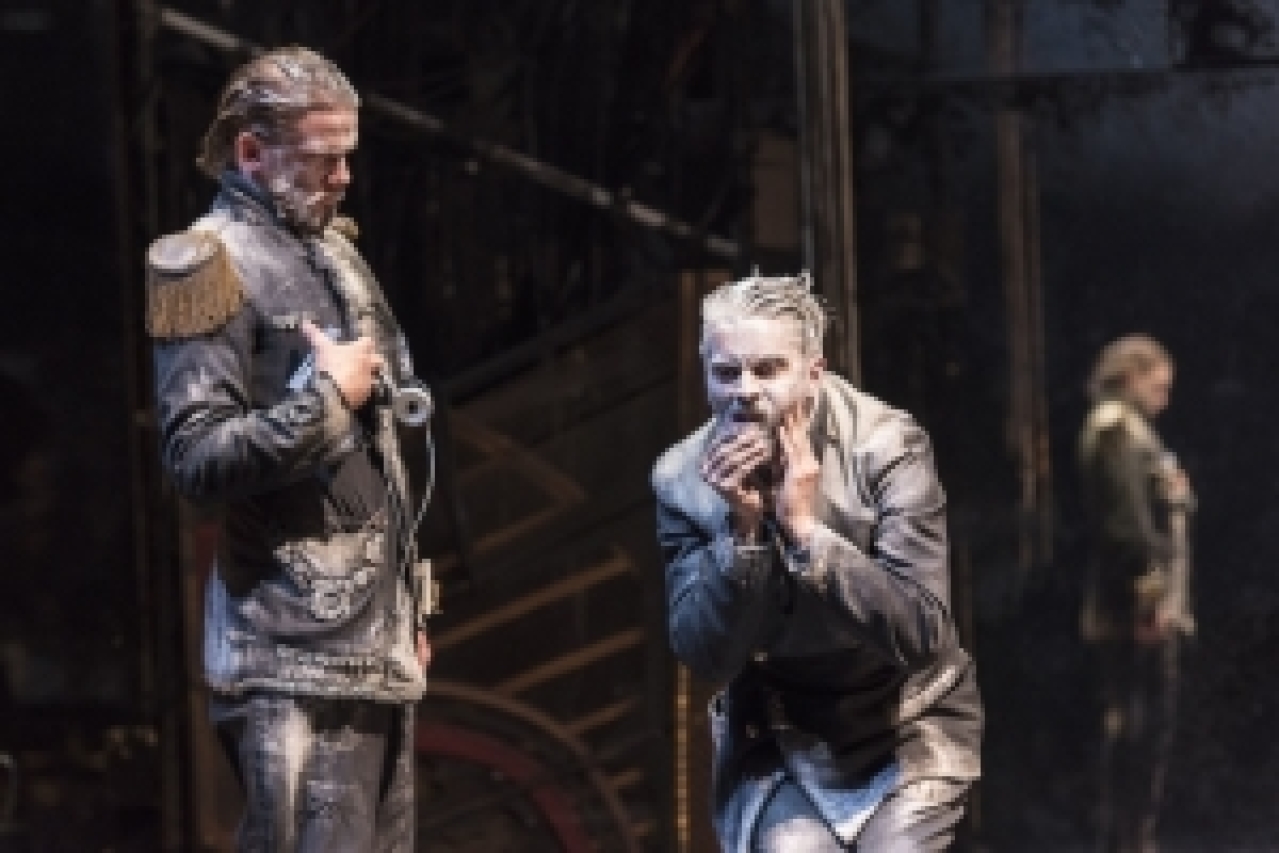Tabac Rouge

(© Jack Vartoogian/FrontRowPhotos)
Through a tangle of wires, one can just make out the silhouette of bodies clinging to pipes as they move up and down on the fly system of BAM's Howard Gilman Opera House. As the mechanical jungle clears away, a contorted figure emerges trapped in a giant trellis, like a fly in a spider's web. These are the arresting first moments of Tabac Rouge, the latest creation of director and choreographer James Thierrée and his Campagnie du Hanneton. While the work is visually breathtaking, thematically, it feels a bit shallow.
Perhaps that is because the party Thierrée throws is BYOM (bring your own meaning); he'll provide the sights and sounds. Certainly, the director (who also designed the set) is quite generous in that regard: A huge wall of dirty mirrors moves around the stage on castors like the ''Les Misérables" barricade. A tired old man (played by Thierrée) sits at a table of steampunk gadgets, looking very much like Samuel Beckett's Krapp. An ensemble of five spectral women prances around him, oscillating between fear and aggression. It's completely stunning, but good luck deciphering what any of it means.
Those seeking a coherent story will be frustrated by Tabac Rouge. Perhaps this is a tale of a man tormented by his own demons. Maybe he's a Lear-like patriarch, inflicting his dementia on the helpless women around him. Or is he an author in search of a story, constantly hurling his latest failure in the wastepaper basket? Thierrée isn't saying, and doesn't seem to know himself. That doesn't mean that his design and choreographic choices aren't ultra-specific, just that they aren't endowed with any obvious meaning in service to a singular story. In fact, any story that emerges is quickly dashed away like a Buddhist sand mandala.
That noted, the color palate doesn't change nearly as much as one would hope. A monotonous and dimly lit mise-en-scène makes for a soporific first half. If Thierrée is so insistent on disrupting the narrative, one wonders why the design cannot be a part of that. A sudden burst of color would break up the dullness of Victoria Thierrée's gray, dusty costumes. While this earthquake-survivor couture is thrilling for the first five minutes, it quickly becomes forgettable and unrelated to the new directions the stage action takes.
Of all the design elements, the sound in most dynamic (Thomas Delot is the "sound manager," but no designer is specifically credited). Menacing mechanical noise seamlessly integrates with an ancient recording of Schubert's "Ave Maria." The performers creep across the stage to a baroque adagio for strings. Taken with the movement and erratic lighting, the effect is schizophrenic: It's like we're peering into the mind of an unreliable narrator.
Thierrée's jerky and uncertain choreography furthers this disorienting tone. Watching him move is like viewing a film that is missing a frame or two: He seems to defy the laws of physics. The effect is often comical, but also impressive in its unlikely grace. It's no wonder that he is regularly compared with his grandfather (silent-film star Charlie Chaplin): He keeps us enthralled by his mere physicality.
Contortionist Valérie Doucet also keeps us mesmerized. There's a committed insanity to her movement, her thick mane of hair is as indispensable as any limb. Audible gasps can be heard as she, with lightning speed, scuttles across the floor like a crab. To watch her is to enter a dreamlike state in which one begins to distrust one's own eyes.
While Thierrée generally eschews a unified emotional response from his audience, the final moments of Tabac Rouge will leave everyone gasping as the giant trellis deconstructs and reassembles into a glittering mobile suspended high off the stage. It is beautiful and deadly, adding an element of real danger harkening back to the work of Lithuanian director Eimuntas Nekrošius (whose Hamlet featured a jagged circular saw hanging above the stage). The tarnished shards of mirror glitter and bend as Thierrée gleefully (and fearlessly) stares up like a turtle on his back. He's clearly a child of the circus (his parents are the founders of experimental circus troupe, Le Cirque Invisible).
Tabac Rouge is best enjoyed by appreciating the stagecraft for what it is. Attempting to attribute deeper meanings to Thierrée's work will be a fruitless effort. This show looks and sounds gorgeous, and that's quite enough for a nice night at the theater.











